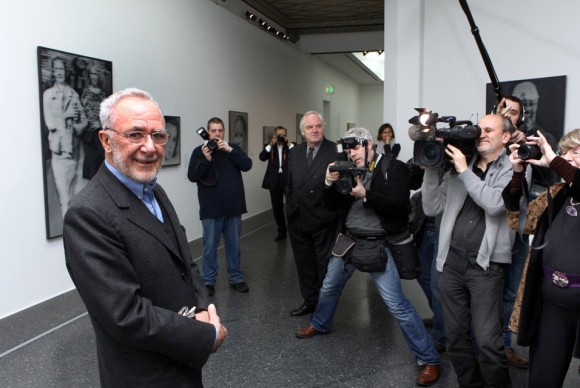Bucerius Kunst Forum Throws New Light onto the Works Gerhard Richter Created in the 60s
HAMBURG.- Gerhard Richter’s large-scale photograph paintings created in the 1960s have made art history. By categorically continuing to paint, Richter positioned himself against the “exit from the picture”. This exhibition at the Bucerius Kunst Forum throws new light onto the works Richter created in the 1960s. Due to their relevance, they are considered images of an era. Many of these images have become inscribed onto the collective consciousness of modern German society. This applies in particular to the cycle October 18, 1977 (1988) which dealt with the death of RAF members at the Stammheim prison. It is one of Richter’s key works and represents a new type of historical painting.
Curated by Uwe M. Schneede, former director of the Hamburg Kunsthalle, this exhibition brings together 50 paintings from German and international collections. By focusing for the first time on his photo paintings, and highlighting their correspondence to reality, the exhibition grants us new insight into this important artistic period which formed the basis for Gerhard Richter’s fame.
Gerhard Richter’s paintings from the 1960s are inexplicably disturbing. They show a single moment in time – but one that remains enigmatic. These moments appear to be snapshots taken at random; however they were frequently inspired by sensational photo documentaries about con men, poisoners or shipwrecks. Richter’s work also reflects the ideals of the 1960s which were based on the happiness promised by Germany’s economic miracle. These ideals could be found in advertisements and in magazines and included fast cars, exotic travel destinations and glamorous film stars.
In his works based on photographic sources, Richter isolated motifs from photo spreads in magazines like Stern and Quick and enlarged them to painting size. Because very few people owned televisions and other images were relatively rare, these magazine photos had an enormous impact on the period and Richter employed them to create his images of an era. Like Warhol and Lichtenstein, he also depicted ordinary everyday objects. Gerhard Richter’s work appears as a rebirth of painting out of the spirit of Pop Art and the Fluxus movement. Its aim is to extract an additional memory dimension from viewers using elements of a specific time.
With works such as Uncle Rudi (1965, Památník Lidice/ Lidice Memorial), and Mr. Heyde (1965, private collection), Richter created a new type of history painting, blurring the image and irritating viewers by leaving them in limbo. An outstanding example of this are the 15 paintings in the cycle October 18, 1977, with which Richter concluded his photo painting works in 1988. In addition to this group of works from the MoMA in New York, which return to Germany once again, the exhibition shows iconic works such as Ema (Nude on a Staircase) (1966, Museum Ludwig, Cologne), Woman with Umbrella (1964, Daros Collection, Switzerland) and Dead (1963, American private collection).
Along with essays by leading Richter experts, the catalog contains an interview with Gerhard Richter by Uwe M. Schneede. In collaboration with the Gerhard Richter Archive at the State Art Collections in Dresden, previously unpublished letters by the artist from the 1960s have also been printed. Furthermore, numerous photos sources have been made accessible for the first time. During the course of examining his Album for the cycle October 18, 1977 new findings have come to light regarding the creation of this key work. The catalog has been published by Hirmer Verlag, Munich (216 pages with color images of all exhibits, € 24.80 at the exhibition).
Gerhard Richter. Images of an Era at the Bucerius Kunst Forum inaugurates a series of international exhibitions on the occasion of the artist’s 80th birthday in February 2012. This includes retrospectives beginning in the fall of 2011 at the Tate Gallery in London, the Centre Pompidou in Paris and the Nationalgalerie in Berlin.
Related posts:
- Work by Gerhard Richter from the Weserburg Museum to Be Offered
- Work by Gerhard Richter from the Weserburg Museum to Be Offered
- Solo Exhibition of Gerhard Mantz with New Virtual Landscapes in Black and White
- Solo Exhibition of Gerhard Mantz with New Virtual Landscapes in Black and White
- Museum Kunst Palast in Dusseldorf opens Per Kirkeby Retrospective

